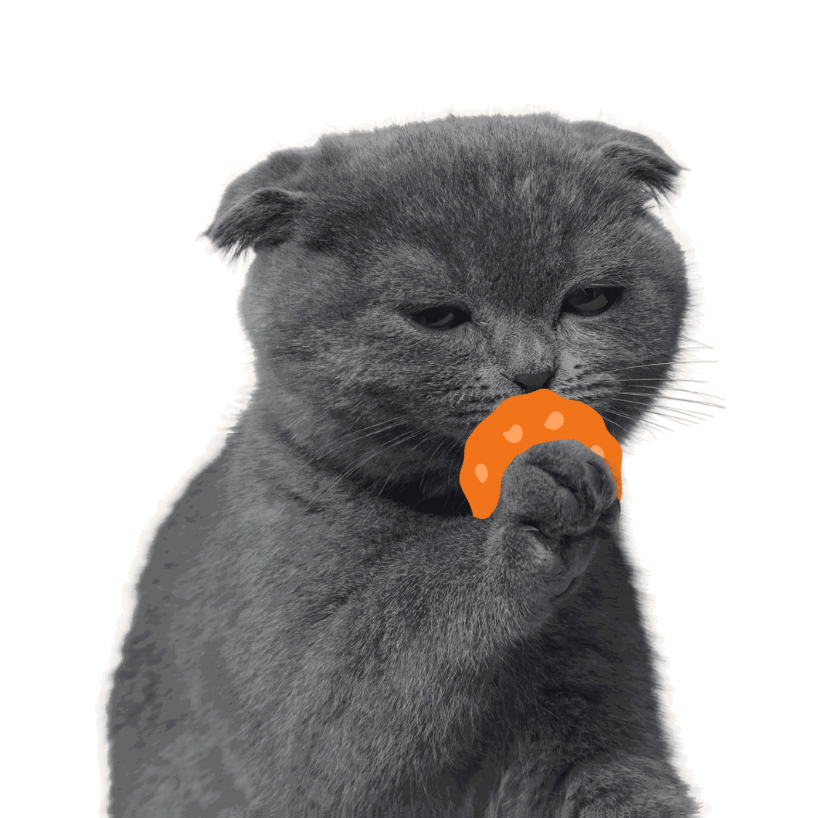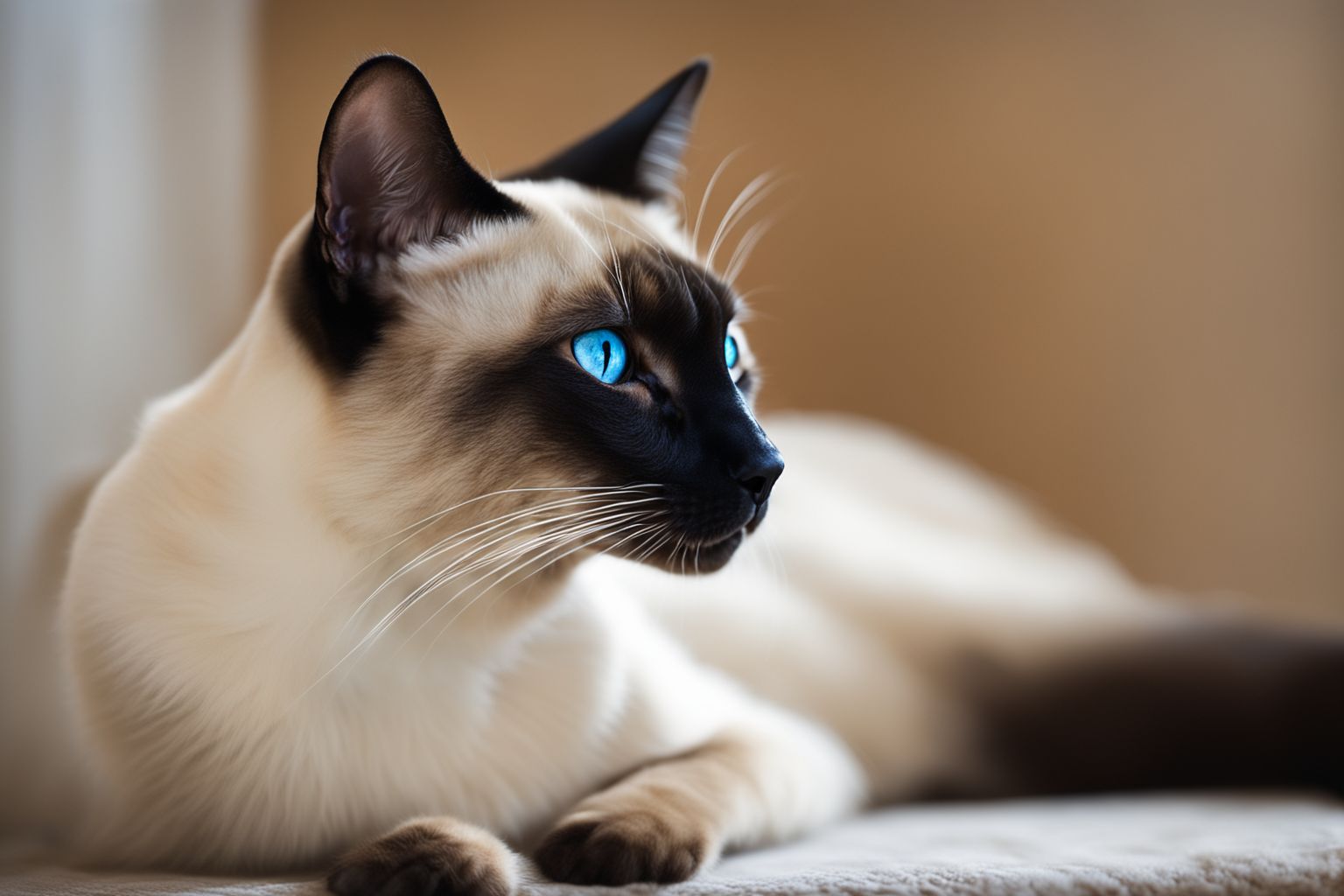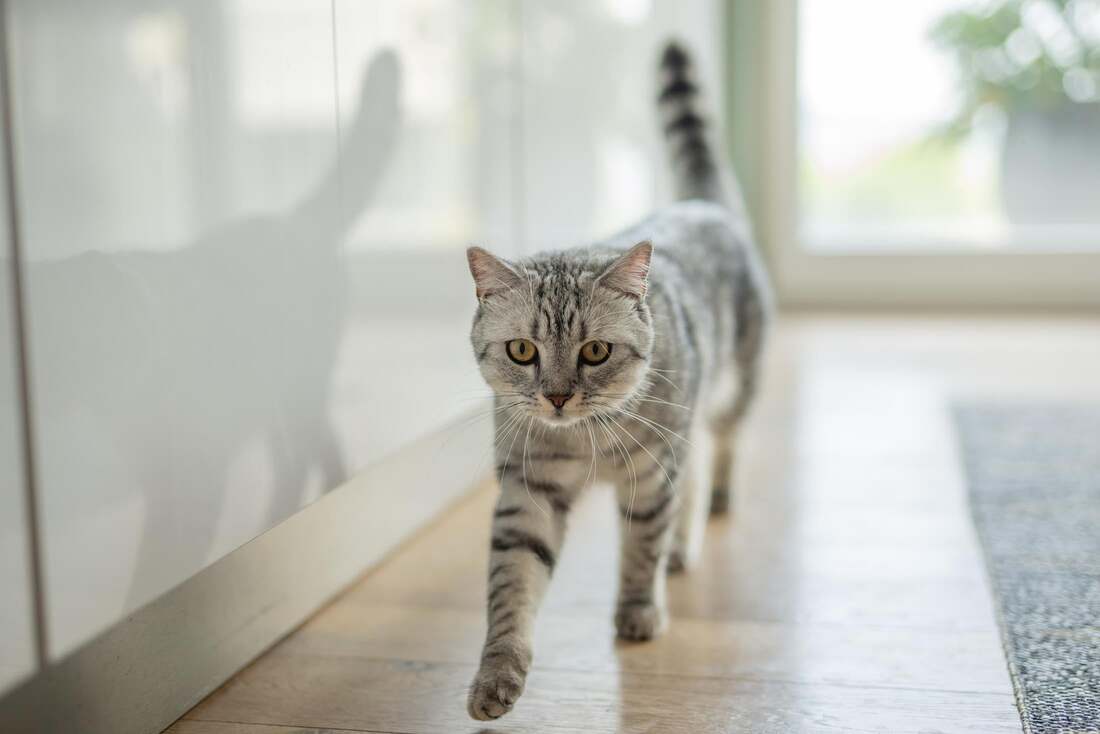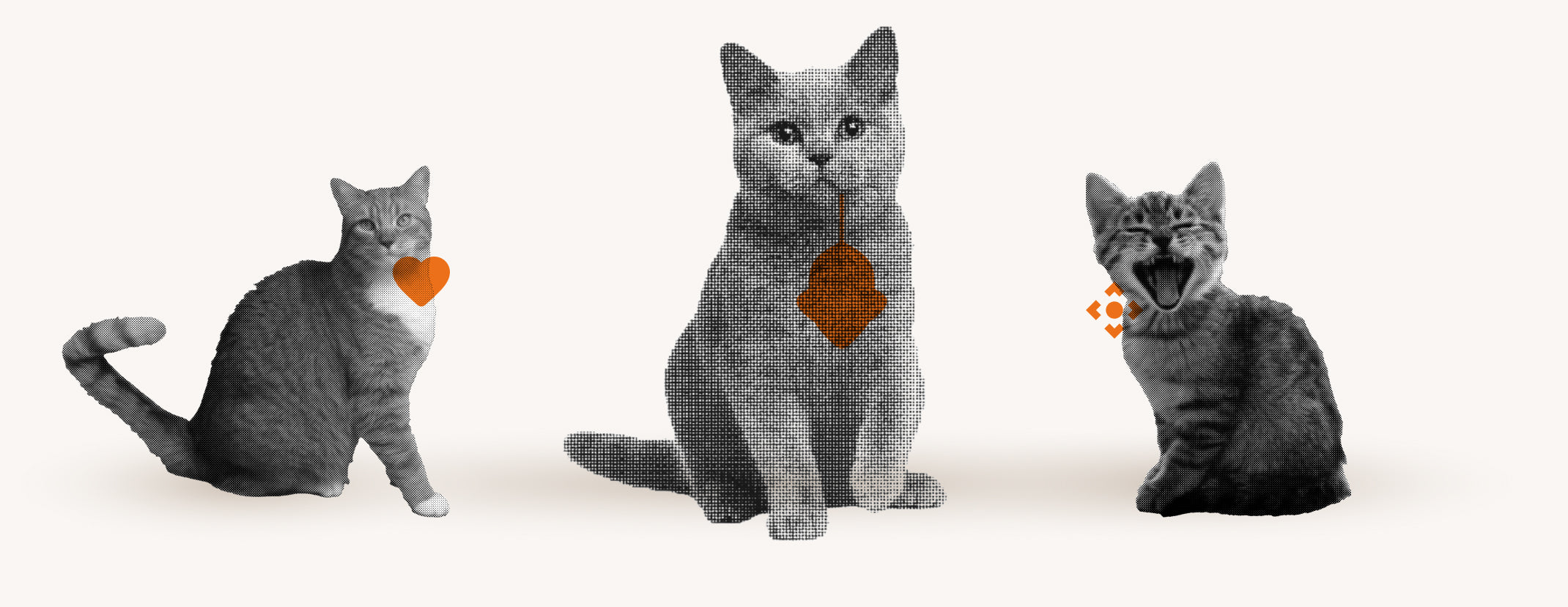Have you ever wondered what makes the Siamese cat so special? Many cat lovers are looking for a loyal, intelligent and social companion, but not every cat breed meets these criteria.
The Siamese cat, originally from Thailand, is known for its communicative nature, its medium-sized stature and its deep blue, almond-shaped eyes.
In this article, we delve into the world of this exotic beauty, explore her lively character, her physical characteristics and give tips on keeping, training and caring for her to make living with a Siamese cat perfect.
The Siamese Cat: A Portrait of Exotic Beauty

The Siamese cat is one of the most fascinating cat breeds in the world. Its roots lie in the ancient kingdom of Siam, now Thailand, where it has been revered for centuries. This cat breed is not only known for its elegant appearance , but also for its deep connection to Thai culture and spirituality .
What makes the Siamese cat so special is its unique combination of appearance and personality . Characteristic features include:
- Deep blue, almond-shaped eyes.
- A distinctive point pattern in which the paws, tail and ears are darker than the rest of the body.
- A slender build and a wedge-shaped head, which corresponds to the modern type, while the traditional type has more rounded facial features.
Their affection and intelligence make the Siamese cat an ideal companion for people looking for an interactive and social cat. They are known to form strong bonds with their humans and enjoy being the center of attention. Talkativeness is another trait that Siamese cat owners often highlight - they communicate happily and often with their owners, making them one of the most communicative cat breeds around.
The fascinating character of the Siamese cat

The Siamese cat is a real character cat and impresses with its affectionate and loving nature . It is not only an elegant eye-catcher , but also a loyal companion who chooses its owners with great affection and develops a deep bond with them. Its talkative nature makes it a constant entertainer who likes to share its opinion and react to what is happening in the household.
With their high intelligence and lively temperament, the Siamese cat is an active part of family life. They love to be the center of attention and demand attention from their owners, making them a demanding but also immensely rewarding pet. Their curiosity and love of play keep them busy and their owners entertained.
The Siamese cat's adaptability allows it to thrive in a variety of environments as long as it receives the love and attention it needs . Whether in an apartment or a house, this breed of cat can thrive anywhere as long as it has enough space to play and explore . Their social nature makes them a great family member who gets along well with children and other animals.
If you are considering bringing a Siamese cat into your life, you should be aware that they require regular interaction and mental stimulation . Positive reinforcement and patience are key to training these intelligent animals. Those who are willing to invest time and energy into the relationship will be rewarded with the deep loyalty and affection of a Siamese cat.
Affectionate and sociable: The social nature of the Siamese cat

The Siamese cat is known for its affectionate personality . It seeks closeness to its humans and is often found where the family is. Its social nature makes it an ideal companion for those who want a pet that will actively participate in family life and build a close bond with its owners.
It's not uncommon for Siamese cats to follow their owners from room to room, always wanting to be part of the action. They enjoy lots of cuddle time and are known for their friendly and playful nature . Their sociability is also shown by the fact that they get along well with other pets and enjoy interacting in a group.
Intelligence and Temperament: What Characterizes Siamese Cats

What makes Siamese cats so special is their extraordinary intelligence . They are eager to learn and can often learn tricks that are usually associated with dogs, such as retrieving or walking on a leash. These intelligent animals love to be challenged and look for something to do when they are bored.
Their temperament is lively and sociable , making them perfect companions for active families. The Siamese cat shows its playful nature and curiosity even in adulthood. Patience and positive reinforcement are the best methods to encourage their skills and ensure harmonious coexistence.
Siamese cats and other pets: tips for harmonious coexistence

Siamese cats can live together harmoniously with other pets if you follow a few important steps . It is crucial to give the animals time to settle in and to slowly get them used to each other. Joint activities can help to build a bond between the animals and minimize conflict.
To promote peaceful coexistence, the following tips should be followed:
- Every animal should have its own place to retreat .
- Provide sufficient resources such as food, water and litter boxes for all animals.
- Promote positive interactions between animals and avoid aggression and conflict . With patience and understanding, you can create a loving environment for Siamese cats and their animal companions.
Appearance of the Siamese cat: size, fur and more

The Siamese cat, a medium-sized cat breed, impresses with its slim and muscular stature. Its short, silky coat, which lies close to the body, emphasizes its elegant lines and requires little care. Particularly striking is the pointed pattern of its coat, which highlights its extremities in darker colors and offers an interesting contrast to the lighter body.
With a shoulder height of about 25 centimeters and a length from head to tail of about 70 centimeters, the Siamese cat is one of the most elegant cat breeds. The weight of an adult Siamese cat varies, with females usually weighing between 2.5 and 4 kilograms and males up to 6 kilograms.
Their grace and elegance are complemented by large, pointed ears and a fine, wedge-shaped muzzle. The almond-shaped eyes, which can shimmer in various shades of blue, give the Siamese cat a hypnotic look that fascinates cat lovers around the world.
How big does a Siamese cat get?
As fully grown animals, Siamese cats reach a shoulder height of 20 to 25 centimeters. This corresponds to the size of a medium-sized cat that fits into any home, whether an apartment or a house.
The weight of a Siamese cat varies depending on gender and individual factors. Females usually weigh between 2.5 and 4 kilograms, while males are slightly heavier and can weigh up to 5 kilograms.
The diverse coat colors of the Siamese cat
The Siamese cat's coat is known for its striking coloring, which is particularly evident on the ears, face, paws and tail. The classic colors Seal Point, Chocolate Point, Blue Point and Lilac Point are particularly popular and characteristic of the breed.
In addition to the traditional colors, Siamese cats have a variety of color variations that have been created through cross-breeding and breeding. These include red point, cream point and rare patterns such as tabby point, which gives each cat its own, distinctive appearance.
The hypnotic eyes of the Siamese cat

The Siamese cat's deep blue eyes are more than just a distinctive feature; they are the window to their soul and reflect their vibrant personality. The color intensity can range from a light aquamarine to a deep sapphire blue, giving each cat a unique expression.
These fascinating eyes are not only beautiful to look at, but are also the result of a genetic trait that gives Siamese cats their blue color. The blue eyes are a sign of their origin as partial albinos, in which the pigmentation is only fully developed on the coldest parts of the body, such as the points.
Life expectancy and health of the Siamese cat
Siamese cats can reach a considerable age . With good care and appropriate housing, it is not unusual for them to live 15 to 20 years . Some specimens even manage to spend up to 25 years , making them one of the breeds with the highest life expectancy . To reach this age, it is important to pay attention to the cat's health and ensure regular visits to the vet .
Despite their robustness, Siamese cats are susceptible to certain hereditary diseases . These include:
- heart and vascular diseases.
- Eye diseases such as strabismus and progressive retinal atrophy (retinal loss).
- Cancers such as lymphomas and colon tumors.
- Pica syndrome, a behavioral disorder in which inedible objects are chewed or eaten In order to minimize health risks , it is essential to focus on early detection and prevention and to subject the cat to a genetic test in order to rule out certain hereditary diseases.
Siamese cat in the apartment: attitude and needs

Keeping a Siamese cat in an apartment places special demands on the cat owner. These active and intelligent animals not only need enough space, but also a variety of activities to satisfy their curiosity. It is important that the apartment offers enough stimulation so that the Siamese cat feels comfortable and remains balanced.
In addition to ensuring that the physical needs of the Siamese cat are met, such as enough space for climbing and jumping, species-appropriate housing also includes satisfying its psychological needs. Social interaction plays a major role in this. Siamese cats are extremely people-oriented and often seek out their owner's proximity in order to chat and cuddle.
Keeping a Siamese cat alone in the home can therefore be a challenge. These animals are very sociable by nature and quickly suffer from loneliness. Therefore, you should consider whether you can give the cat a companion with whom it can play and communicate, especially when the owner is not at home.
Can Siamese cats be kept alone?
Siamese cats are known for their social and sociable characteristics. They should not be kept alone , as they need interaction with other cats or people to be happy and well-balanced. Their communicative nature and need for company make them ideal animals to keep in pairs.
If it is not possible to have a second cat, the owner should ensure that the Siamese cat is not left alone for too long. It is important to give it plenty of attention and activity to avoid boredom and possible behavioral problems. Regular interaction and playtime are essential for the well-being of a Siamese cat.
Play and activity for the active Siamese cat

Siamese cats are known for their activity and playful nature. There are various toys and activities that can be used to keep them busy in the home. Interactive toys such as fishing rods or balls that can be rolled around the home are ideal for stimulating the hunting instinct and physically exercising the cat.
In addition to toys, you can also train your cat to encourage its intelligence. Clicker training or intelligence toys that encourage the cat to think are valuable methods of mentally engaging your Siamese cat. Hiding treats around the house can also be an exciting activity that satisfies its natural urge to explore.
Nutrition and coat change: What to look out for
Diet plays a major role in the health and well-being of a Siamese cat, especially during the shedding period. It is important to ensure a balanced diet that contains all the necessary nutrients. This can be achieved by providing a combination of high-quality wet and dry food that has been specifically developed for the needs of Siamese cats. You can also offer natural ingredients such as cooked chicken or fish to provide variety.
During the coat change, which mainly occurs in spring and autumn, the diet can be supported by special supplements. Here are some tips:
- Food supplements such as oils rich in omega-3 and omega-6 fatty acids can help keep the coat shiny and healthy.
- Products such as Kattmalt can reduce the formation of hairballs, which can be caused by increased grooming during the shedding period. These targeted dietary adjustments promote the well-being of the Siamese cat and optimally support its beautiful coat .
Raising a Siamese cat: How to make it live together
Training a Siamese cat is different from other cat breeds because they are particularly sensitive and intelligent. It is important to be patient and not to train the cat with severity or violence. Instead, you should rely on positive reinforcement by rewarding good behavior, for example with treats or cuddles. Consistency is also crucial; once rules have been established, they should be followed consistently to avoid confusion in the cat.
To ensure harmonious coexistence, some basic rules should be observed:
- No screaming , as Siamese cats have very keen hearing and loud noises can frighten them.
- No physical punishments as these can damage the cat's trust and lead to fear.
- Consistency and patience in training to help the cat understand and follow household rules. With these simple but effective methods you can help the Siamese cat to integrate well into the family and become a happy, balanced pet.
The different types of Siamese cats
The Siamese cat has evolved into several types that differ in appearance and sometimes also in character. The best known are the traditional type , also called Thai or "Old Style Siamese", with a rather round head and a powerful build, and the modern type , characterized by a slimmer body and a wedge-shaped head. Within these two main types, there are other variants that have arisen due to specific breeding objectives, such as:
- The "Applehead" Siamese cat, which has an apple-shaped head
- The “Classic” Siamese cat, which represents a middle way between the traditional and modern type
In addition to the differences in body structure and head shape, there is also a variety of color variations . The classic point colors such as seal, chocolate, blue and lilac are the most common, but there are also cats with red or cream points and even with special patterns such as tabby points. These color variations are created by combining different genes and can therefore offer a wide range of looks. It is important to note that, despite their differences, all of these types retain the essential characteristics of the Siamese cat, such as blue eyes and the social, lively nature.
Flappie: The intelligent cat flap for Siamese cat owners
Flappie offers Siamese cat owners an innovative solution to prevent their beloved four-legged friends from bringing prey into the house. The smart cat flap uses selective access control and prey detection through a camera and artificial intelligence. So if your Siamese cat tries to come home with a mouse or a bird, the flap stays closed and protects your home from unwanted guests.
The Flappie app complements the system perfectly by allowing you to control the cat flap remotely and sends important notifications directly to your smartphone. This allows you to:
- Control your Siamese cat's access, even when you are not at home
- Receive photos and videos of your cat's adventures
- View statistics about your cat's behavior With Flappie, your home stays clean and safe while your Siamese cat enjoys the freedom it needs.
Frequently Asked Questions
What is special about Siamese cats?
What makes Siamese cats special is their unique combination of appearance and personality. They are known for their deep blue, almond-shaped eyes, their pointed coat pattern and their elegant stature. Their personality is characterized by affection, intelligence and talkativeness, which makes them one of the most communicative cat breeds. They are very social and build a deep bond with their humans, which makes them ideal companions.
What do you have to consider with Siamese cats?
With Siamese cats, it is important to remember that they need regular interaction and mental stimulation. They should not be kept alone as they are very social and need the company of people or other cats. It is important to give them enough space to play and explore and to ensure that they are fed a species-appropriate diet. They should also be taken to the vet regularly to minimize health risks and to be able to live a longer, healthy life.
Why are Siamese cats so affectionate?
Siamese cats are so affectionate because they have a strong social nature. They seek the proximity of their owners and often want to be where the family is. Their affection is shown by the fact that they follow their owners from room to room and like to be part of the activities. They enjoy long cuddles and build a close bond with their owners.





Share:
Maine Coon life expectancy: How old do they really get?
Main Coon coat care: tips for a shiny cat coat